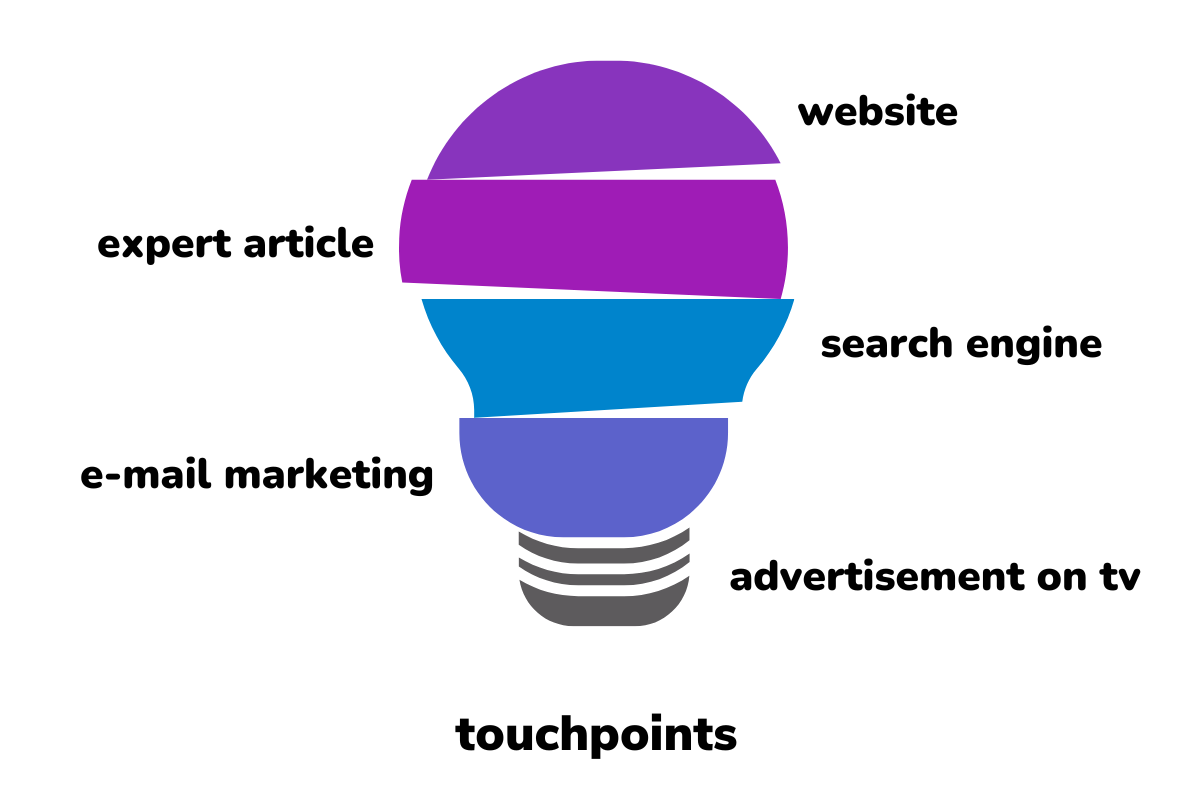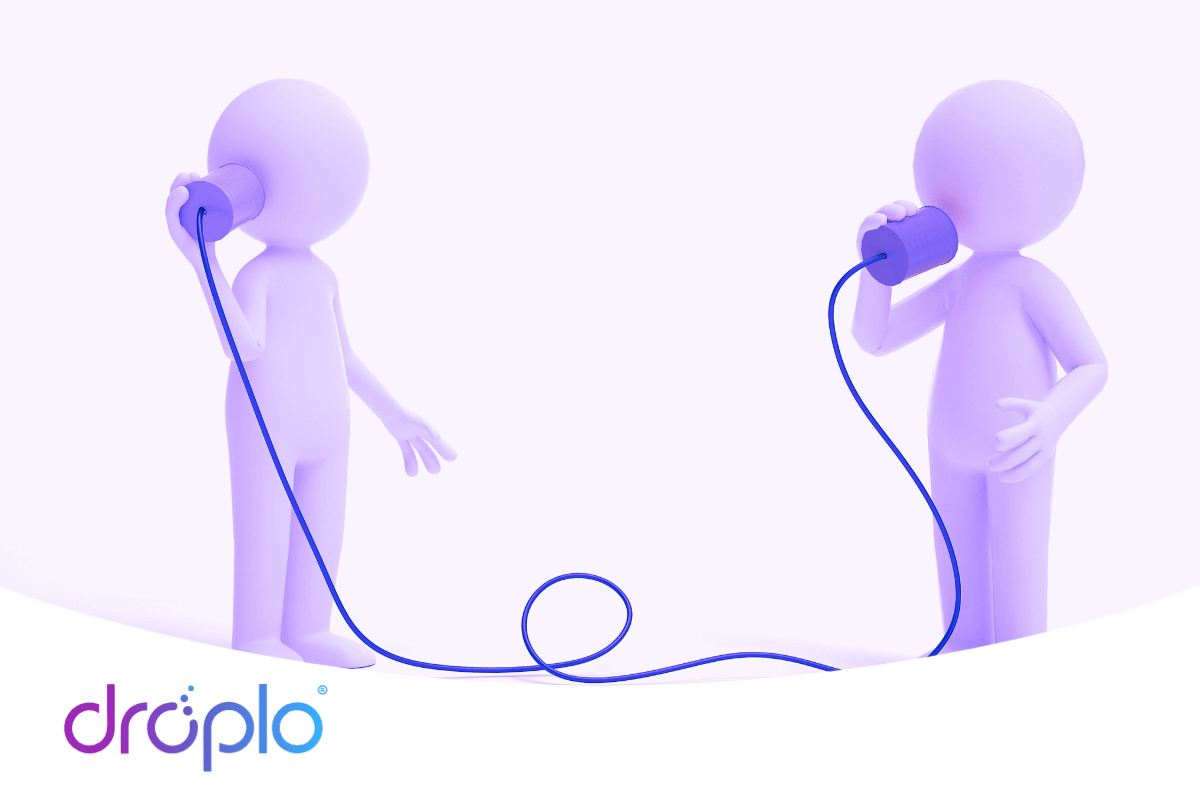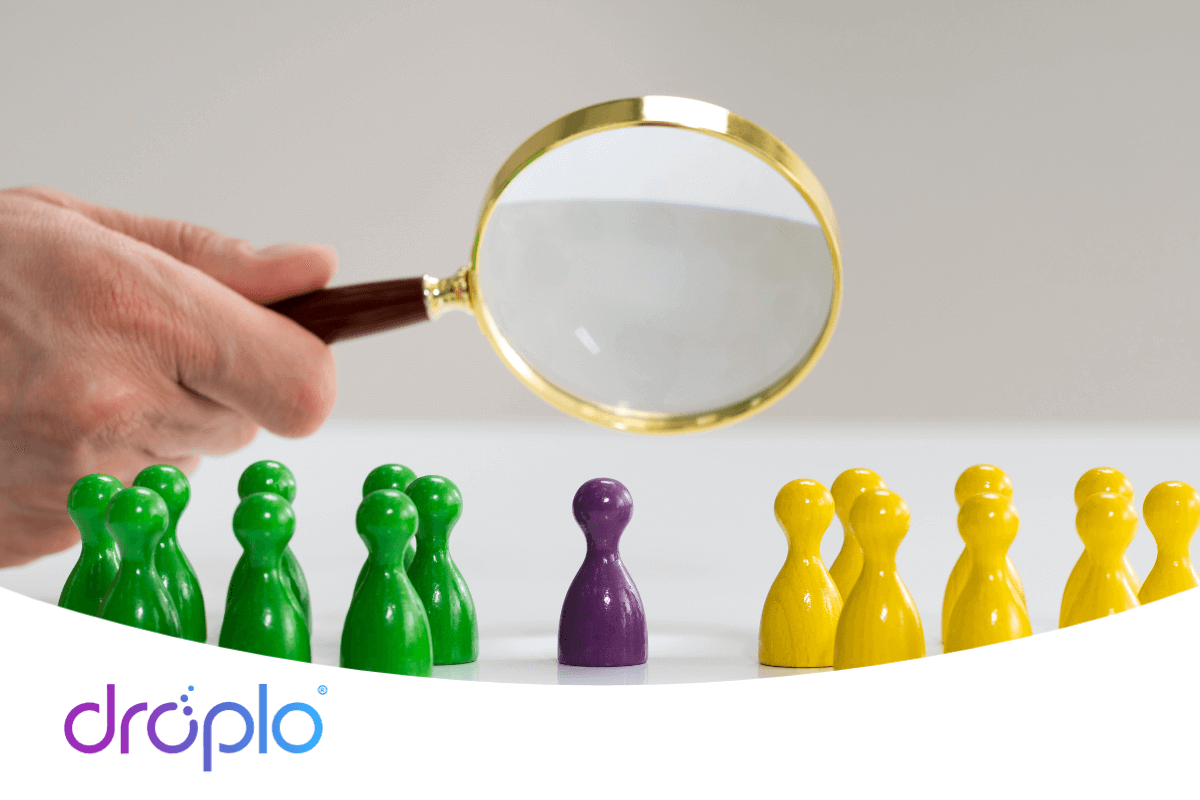Estimated reading time: up to 5 minutes
The service of a potential customer begins… long before the sale is closed.
1. Customer service – pre-purchase
Did you know that every day your brand’s audience consists of random people who are not interested in your product at the moment? You yourself are also that kind of person for other brands. Every day, browsing the press, the Internet, advertising catalogs, you unintentionally make contact with brands with which you have nothing in common, whose products/services you do not need at all at that moment.
But through the touch points and learning about your needs, the brand has a chance to turn you – an involuntary observer – into an active customer. You can also work this way with your audience.

Touchpoints, aka points of contact with your brand. These are all the places – virtual and physical – where a potential customer interacts with your brand.
There should be as many of them as possible, but generally speaking, there are about 20 necessary touchpoints for simple products, like a candy bar, to as many as 500 for more complex products, like air travel.
Sometimes even one point of contact is enough, when, for example, a neighbor recommends a beauty salon whose services you will use.
What we can refer to as touchpoint:
- website;
- fanpage;
- online reviews;
- expert article;
- search engine;
- e-mail marketing;
- radio advertisement;
- price comparison sites;
- graphic advertisement;
- advertisement on television.

Respond to customer actions
Sometimes we focus so hard on attracting new potential customers and fail to reach the potential of existing ones. Or we think that if a user is “only” active on social media without being our customer, it’s not worth engaging in that relationship.
How can you mobilize your non-customers more?
- Take your time – respond to comments on social media, answer emails efficiently, answer phone calls and return calls as soon as you can
- Join groups where your potential customers are, participate in discussions and share your knowledge (when, for example, there is a question about what workout mat to pick and you sell sports equipment – even not necessarily mats – give tips, provide help).
- Share free materials, webinars in exchange for an email address
- Use the list of people subscribed to your newsletter and offer them your e-book, or to like your fanpage
- Be smiling and eager to help – let potential customers see this in your communications and conversations
- Enhance humor – post humorous graphics, videos
- Address customers by name, shorten the distance
- Be at trade shows, get involved in industry events, display and take photos with celebrities, which will increase your credibility and authority
- Show that your products are bought by other customers and that there are many of them (reviews, photos of product application, number of purchases)
- Showcase the customers/partners you work with
- Get recommendations from customers and brag about them – the more well-known and prestigious the company, the better for you.

Who is my customer?
In order to be able to prepare the touchpoints well, you should know who your customer is. It is not “everyone” and they are not “all”.
- What age?
- Is it male or female?
- About what income?
- Where does he/she work?
- Where does he or she live?
- What does he/she worry about?
- What does he/she do after work?
- What is important to his/her in life?
- What kind of education does he/she have?
- What is important to him/her in the purchasing process?
Creating a persona, aka an ideal customer, will allow you to develop a language of communication and create a map of the places where you will place your advertising.
When planning your marketing activities, you will have a specific person in front of your eyes to whom you are directing your message and offer.
After all, you talk differently to a teenager about the latest iPhone model, and differently to a senior citizen about a comfortable mattress to sleep on, right? 🙂
2.Customer service – during the purchase
When your not-yet-customer, traveling through the touchpoints, makes their first purchase – you have reason to celebrate. But don’t settle on your laurels, work even harder to ensure that this customer experience is the best it can be.
Personalized transactional email, fast shipping, real-time purchase assistance will reassure the customer that they made the right choice.
On-page chat, a 15-second callback widget or a quick email form will allow you to respond instantly when the customer needs it.

3.Customer service – after purchase
This is the time for after-sales care and building loyalty. After-sales care is both accepting positive feedback and handling returns or complaints efficiently. It’s also remarketing, or newsletters with new products. To get the customer even more attached, think about a loyalty program and rewards. A loyal customer provides stability for the company.
65 percent of Poles check store reviews before e-shopping, 58 percent compare prices of the chosen product – these are the results of the survey “Safe on E-shopping 2022”. 41 percent of respondents check the terms of returns and complaints. That’s why it’s so important to take care of the after-sales care of each customer – with an order for 5 euros and for 50,000 euros.

Customer service vs. sales
If you realize that a customer is able to compare the offer of a dozen stores in one click of the mouse you will see that customer service becomes the most important and sometimes the only variable that can convince a customer to buy just in your store.
Consistency is extremely important. Not only visually but communicatively. You can spend a huge amount of money on marketing, but if customer service is limping along, the sales won’t be there.
Here we will give a personal example. A local company, interestingly and humorously run a fanpage. Here I will give a personal example. A local company, interestingly and humorously run fanpage. Request for a quote sent on messenger (company fanpage), during the week, around 11 pm. The next day, at 6 a.m., a response appeared: “I would very much like to ask you to send inquiries during normal hours, as you are underestimating my response time to your message.”
Despite the best ads, an interesting fanpage, the company just lost a customer. If we look at the diagram below, we can safely assume that not just one.
Good customer service translates into customer satisfaction. And one customer’s satisfaction translates into loyalty and attracts more traffic.
See also:
The e-commerce trends. How to boost your store’s sales? Part 1
The e-commerce trends. How to boost your store’s sales? Part 2
How to effectively beat the competition in e-commerce?

 Aleksandra Strugalska
Aleksandra Strugalska 